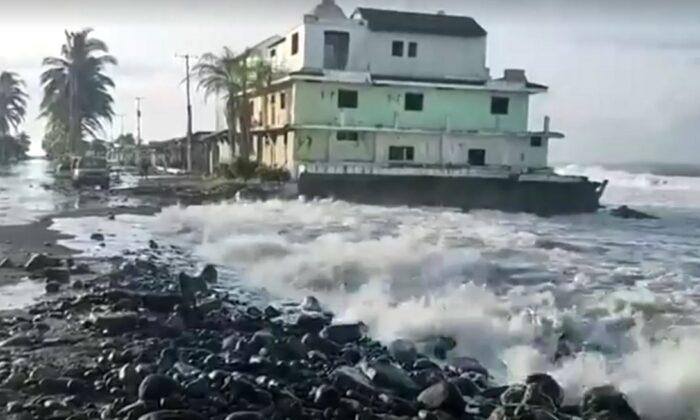For a 14th straight day, tornado sirens blared in several states as lines of severe storms rolled across the United States.
Several tornadoes were spotted in Texas, including one southeast of Dallas.
Brent Kay Maynard said he had just walked out of a building when he saw a tornado from the parking lot of Mabank High School in Mabank, Texas.
The twister was about 4 miles west-northwest of town, the National Weather Service said.
There were no immediate reports of injuries.
More Than 500 Tornado Reports in 30 Days
So far this year, there have been at least 960 tornado reports, compared to the average year total of 750.The National Weather Service has received more than 500 tornado reports across the country in the last 30 days—an unusually high amount.

There are only four other recorded instances when more than 500 US tornadoes were observed in a 30-day period: in 2003, 2004, 2008 and 2011, according to Patrick Marsh, a meteorologist with the weather service’s Storm Prediction Center.
The month of May has brought more than 460 reports of tornadoes in 22 states across the country, with Texas, Oklahoma and Kansas making up 50% of the reports.
The jet stream played a part in the activity of the last two weeks, CNN meteorologist Chad Myers said.
“It is a stuck jet stream,” with areas of low pressure riding along it, Myers said.
Dozens of Homes Gone, Kansas Mayor Says
Parts of Kansas and Pennsylvania are recovering from Tuesday’s terrifying evening of tornadoes.
A massive, rain-wrapped tornado ripped by Linwood, Kansas, outside Kansas City on Tuesday evening, and dozens of homes on Linwood’s outskirts are “all gone,” Mayor Brian Christenson told CNN.
At least one tornado and severe storms ravaged areas there and in nearby Douglas County, Kansas, destroying stretches of homes and businesses.

The tornado near Linwood was an EF4 with peak winds of 170 mph, the National Weather Service said. It was on the ground for 32 miles.
It leveled Brian Hahn’s home while he and his family were huddled in the basement under a mattress.
“I feel lucky I’m alive.”
Arkansas Braces for Record River Levels
Rains this week are exacerbating flooding that has troubled parts of the central US for weeks.While flooding has occurred for days along the Arkansas River in Oklahoma, the river is now approaching record levels to the east, in Arkansas itself.
In western Arkansas near the communities of Van Buren and Fort Smith, the Arkansas River is expected to crest Wednesday afternoon at around 41 feet—roughly 3 feet above the record there.
Levees along the river in Arkansas have worked so far—water has overtopped two of them, but they have not failed, Arkansas emergency management spokeswoman Melody Daniel said.
Daniel said more than a dozen Arkansas counties are expected to see historic flooding.
Officials in the central Arkansas city of North Little Rock, across the river from the state capital, believe 50 homes could soon be impacted by flooding, the city said in a Facebook post.
Intentional Water Release Flooding Homes Outside Tulsa
In western Oklahoma, the swollen Arkansas River has posed a threat to Tulsa’s levees—so the Army Corps of Engineers has intentionally been releasing water from a dam to the west in hopes that the levees aren’t overwhelmed.Some homes had 2 to 6 feet of water in them, residents told a CNN crew there.
Rick Sawn’s Sand Springs-area home still was dry on Wednesday morning, but water has been creeping toward it.
“I think it’s a 500-year flood and so far our dam and levees are doing what they were designed to do,” Sawn, 68, said. “There is flooding and some loss of property, and long-term recovery head of us, but without the dam system, it would have been far, far worse.”
The Army Corps of Engineers has been releasing about 275,000 cubic feet of water per second from the Keystone Dam, about 20 miles west of Tulsa—which is the equivalent of three Olympic-sized pools. Doing so will increase the strain on some of Tulsa’s levees, Tulsa Mayor G.T. Bynum said.
The Keystone reservoir has started dropping, and that could allow the Army Corps of Engineers to slow the rate of the water release by Friday, corps hydrologist David Williams said.
Bynum has been asking Tulsa residents who live near the levees to relocate temporarily, just in case the levees don’t hold.
“There is absolutely no need to wait until the last minute when an evacuation might be necessary,” he said at a news conference.




